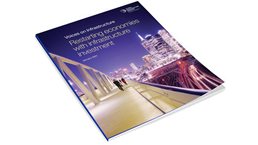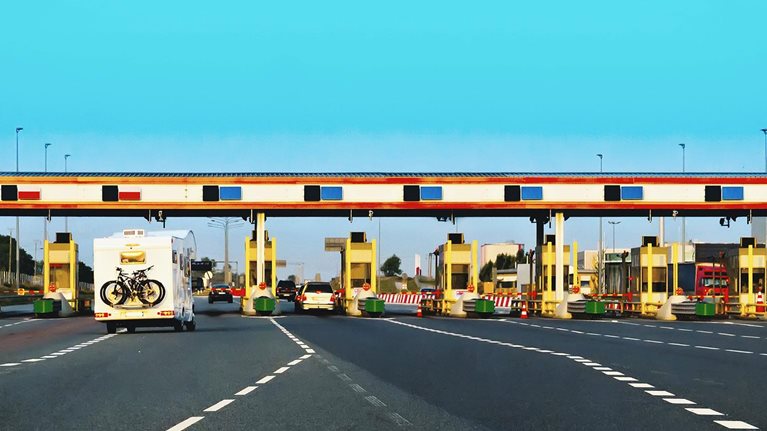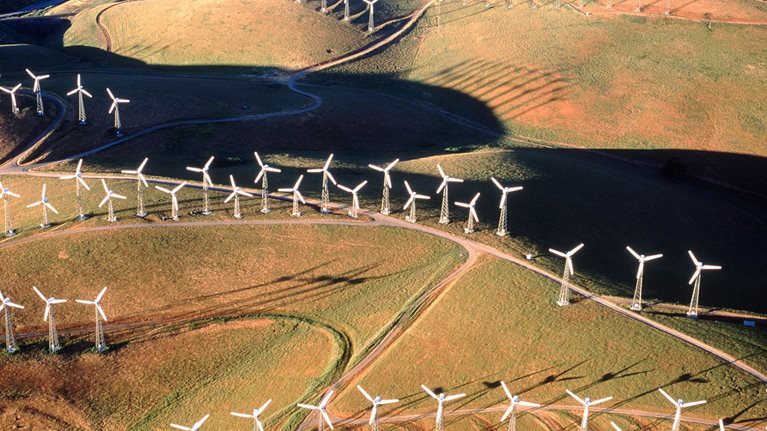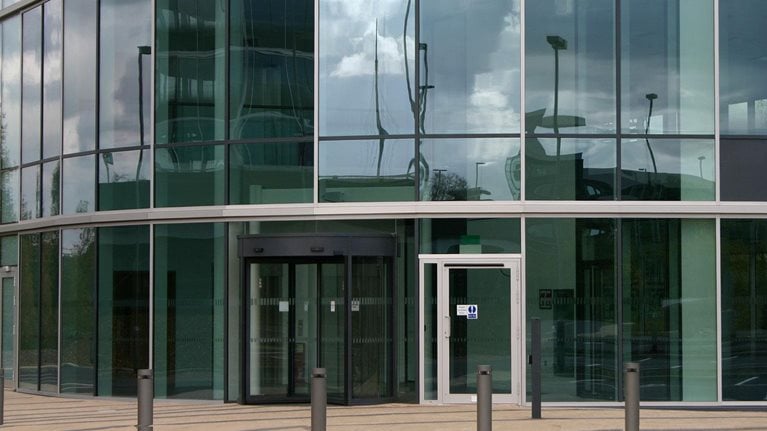The issue of climate change is still with us, writ large. With many countries and companies committing to achieve net-zero greenhouse gas emissions by 2050 or earlier, and many private or pension investors shunning carbon-related assets, the policy questions for the world are staggering. The COVID-19 pandemic has further complicated these questions.
Decarbonizing a modern economy has never been done and presents inherent risk to governments and investors alike. At the heart of success is how all parties—asset owners, investors, and policymakers—understand and manage this risk. They must stay in tune with how policies and regulations are developed to achieve low- or zero-carbon economies and ensure early-stage development capital is available to advance the right projects. The stakes are high: advancement of these infrastructure projects is widely recognized as a critical aspect of postCOVID-19 economic recovery.
But how does economic recovery fit within the green agenda? The so-called green recovery incorporates resilience into infrastructure to achieve net-zero projects. The challenge is in identifying areas of opportunity for adopting new technologies or retrofitting existing assets. In addition, companies must decide when to move on from stranded assets, such as fossil-fuel power generation, that are nearing the end of their economic life because of regulatory or market changes.
In the years to come, asset owners will need to understand how the markets will be affected by the energy transition, make decisions based on climate policy and regulation, and pursue public–private partnerships.
Would you like to learn more about our Operations Practice?
Stranded assets present significant challenge
Many investment opportunities will arise from increased digitalization, green gas, electric vehicles (EVs), clean power, and other areas of innovation. However, companies must carefully manage these opportunities alongside challenges from stranded assets.
For example, in the United Kingdom, coal-fired power stations will be taken off the grid no later than 2025. While coal remains a major source of electricity generation for some EU countries, commitments to hit net-zero emissions targets will require the European Union to rapidly adopt new clean sources of energy. Another area is oil and gas infrastructure. Globally speaking, there are numerous questions asset owners must ask—for instance, when will internal-combustion-engine (ICE) vehicles be banned? How quickly will consumers move to EVs? Or how fast can economies move to green gas? Similarly, revenues that once seemed set in stone, such as those for certain tollways, might now be less predictable because there may be less traffic over the next ten years.
If economies hope to meet climate-change objectives, leaders in both the public and private sectors will need to address the challenges of stranded assets, consider the latest climate guidance and policy, and determine when to pursue opportunities and when to exit. For instance, does it make more sense to reverse-engineer carbon capture and storage (CCS) technologies or introduce newer, cleaner options?
Critical questions for implementing a ‘green recovery’
Determining how to move forward with a green recovery requires a large-scale shift in the role infrastructure plays in economies. The following questions, which often result in interdependent answers, can help determine the industry’s path forward.
How can current asset owners and future investors manage risk and realize opportunities?
Owners and investors alike must understand the speed of the transition over the next ten to 15 years, as well as which markets will transition completely (requiring greenfield projects) and which will be merely impacted (requiring brownfield projects). For example, the midstream gas and transport sectors will likely need to transition to accommodate green gas and hydrogen-based fuels, while the power sector could adopt CCS technologies.
A clear view of the challenges can help identify opportunities and, more important, avoid risk from stranded assets. With this view in mind, companies will also need to leverage or attract new investment around both greenfield and brownfield projects, which requires careful evaluation of existing assets, new investment opportunities, and the latest policy changes.

Voices on Infrastructure: Restarting economies with infrastructure investment
How should investors incorporate current climate guidance and policy into their decisions?
Assets must be future-proofed according to current climate guidance. For instance, assets located in coastal areas will likely need substantial investment to increase their climate resilience to a level that protects their value for many decades. By contrast, consider tollways equipped with gas stations. Such stations will be necessary for many years—albeit over time, with falling demand—until new regulations phase out ICE vehicles. However, looking at the impending transition to EVs, it’s clear there is a need to create cross-country infrastructure to accommodate EVs and destination charging units at malls and airports. The same logic applies to supplying electric coaches, buses, and heavy vehicles with power.
Many new technologies and start-ups are emerging—all claiming to provide the fastest, cleanest solutions. Thus, it’s critical that owners understand the challenges on both technical and economic levels, identify linked opportunities across sectors, and pursue partnerships that are mutually beneficial. As an example, a recent partnership between two European companies will result in the use of offshore-wind infrastructure to create hydrogen, which is then injected directly into the natural-gas grid to reduce emissions. In this sense, everyone benefits: the major infrastructure players that own the gas networks; the industry itself, which decarbonizes; and customers who receive a cleaner, greener product.
How can policy makers achieve decarbonization agendas?
Investing in infrastructure to decarbonize requires a multidecade horizon for any asset. In an uncertain world in which conditions are constantly changing and technology is always evolving, companies and policy makers need to be realistic about implementing change, and governments need to be clear and transparent about how their policies will evolve. In the United States, for example, change occurs on both federal and state levels. Local departments of transportation would also need to be involved. In the United Kingdom, the duties placed on regulators will likely need to be reset to meet the fast-evolving needs of net-zero economies.
No matter the region, an open discussion on how economies can best deploy public and private capital to create clean, emissions-free infrastructure is critical. This means understanding the markets in which healthy competition will work, those that require regulatory intervention, and where and how government and private capital can work in partnership, including clear direction from governments on preferred infrastructure funding models to enable private capital investment.
Finally, an understanding of what fulfils the description of “investable infrastructure” will play a vital role. There will be some elements of new technology that require government support to move forward to the point that the risk profile is reduced sufficiently for private capital.
Relatively new technologies or assets—such as more powerful batteries, CCS, floating offshore wind, EVs, and hydrogen gas—all require different funding models to help their early-stage development and bring private capital in at different risk and return levels. And governments, investors, regulators, and society all have a part to play.
Decisions made today by asset owners, investors, and policy makers should not be taken lightly because they will affect generations to come. It is critical not only to act now but to do so decisively. Similarly, societal expectations of what it means to “do the right thing” are changing, including where pensions are invested, how assets are managed, and how reporting requirements are disclosed. While the opportunities are increasing in number, the bar for success is arguably getting higher. In the end, getting the right advice is often a matter of asking the right questions.
Voices highlights a range of perspectives by infrastructure and capital project leaders from across geographies and value chains. McKinsey & Company does not endorse the organizations who contribute to Voices or their views.


